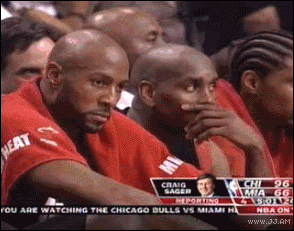bwgood77 wrote:Sure, but personally I don't like watching players like that. As a PG, 6 isn't that great, and he doesn't initiate real ball movement early that often, and one of the worst defenders in the league. Definitely wouldn't want him here. Sure, if we were going to keep Knight long term as 6th man, I'd take IT over him, but prefer neither.
The Celtics move the ball very well, though—they currently rank fourth in the NBA in assists per game with 24.875 (virtually tied with Milwaukee for third place at 24.89), with Golden State first (by a huge margin) and Houston second. None of these teams feature consummate point guards by any stretch (despite Harden's assists average), but there they are. Meanwhile, the Clippers with Chris Paul rank fifteenth in assists per game, while the Thunder with Russell Westbrook currently rank nineteenth.
http://www.basketball-reference.com/leagues/NBA_2017.htmlThere are a couple of reasons why Boston's assists average is so high despite Thomas being much more of a scorer than a playmaker.
First, Thomas does not simply bring the ball up the court and go right into offensive orchestration on possession after possession. He will do that on some possessions, but often, he will give the ball up early with a short pass and then dart around—moving here and there, perhaps setting some back-picks or brush-screens—before circling back to get the ball again off a short pass or a handoff. Then, if an initial opportunity fails to bear fruit, Thomas will often give the ball back up with a short pass and then get it back again on a handoff to re-initiate a pick-and-roll/pop. In short, the Celtics feature a lot of ball movement—they constitute one of the best ball movement teams in the NBA—and Thomas does not function in a sedentary manner. Brad Stevens has always prioritized ball movement and a lot of preliminary or default "action" (the short passes and circling movement into pick-and-rolls/pops, the handoffs leading into pick-and-rolls/pops), and Thomas has fit into that system ever-so-smoothly. Also, Boston at times will station Thomas off the ball, sometimes in the corner, while another guard such as Avery Bradley or especially Marcus Smart orchestrates a pick-and-roll/pop or turns a down-screen curl into a pick-and-roll/pop. Thomas thus keeps the defense honest or spread via his presence, or he burns the defenders if they sag off to help. Or sometimes Thomas himself will curl off down-screens for three-pointers. In short, Thomas is somewhat analogous to a queen on a chess board, a versatile weapon—which is ironic given his height.
Second, although I do not know if there is any statistical tabulation in this area, Thomas records quite a few "hockey assists," meaning the pass that leads to the assist. After Russell Westbrook, he is probably the best player in the game right now at collapsing a defense, and often the Celtics will score not directly off Thomas' kick-out pass, but off the next pass as Boston catches the defense in rotation and unable to reach the next shooter/slasher.
And while Thomas' assists average may be modest for a star point guard, his assists-to-turnover ratio this season, while not great, is good at 2.55:1.00 (especially given that he is also a huge-volume scorer). Indeed, compare that ratio to Bledsoe's 1.87:1.00 or to Knight's 1.42:1.00. Thomas does possess a good feel for the game and good court awareness. Yes, he forces some shots at times and will launch some indiscriminate threes that certainly go against what point guards are supposed to be about. But do you know what? So does Stephen Curry (or Damian Lillard, to say nothing of Russell Westbrook). No, Thomas does not shoot as well as Curry, but he is a much more dynamic driver who currently averages more assists with a much better assists-to-turnover ratio than the reigning MVP. And, really, the overall crop of NBA point guards has become oriented in that manner. I do miss the days of twenty-five years ago when there were several point guards who could really score yet did so with discipline, shot selection, and within a context of distributing the ball and running an offense. But contrary to the mindless media hype, Steve Nash turned out to be an outlier, not a predictive model. The portents of the future could instead be found in Allen Iverson, Stephon Marbury, Steve Francis, and those sorts of point guards. Some of the guys now are better shooters (although some, such as Westbrook and Derrick Rose, are not), and certainly they are benefiting from today's spatial concepts, but the position has basically tilted heavily toward scoring. The guys who really find that balance, like Chris Paul and John Wall, have become the exception to the trend. The question is more how well a guy does what he does (so to speak), and Thomas does it really, really well.
I also would disagree with the notion that you presented earlier about Thomas being a guy who gets his assists with two seconds on the shot clock. He might have been that way in Phoenix (recalling precisely is difficult, given the experimental and awkward nature of those lineups), but in Boston, Thomas is basically a guy who just looks to attack. Sometimes, depending on the defensive strategy and the flow of the game, his approach will lead to assists; sometimes it will not. How else does one explain a guy passing for 0 assists in one game, a career-high 15 in the next (a contest that I viewed and studied on NBA TV), then 3 in the next, followed by 0 in the next?
http://www.basketball-reference.com/players/t/thomais02/gamelog/2017 In addition to Thomas being far from a classic or consummate playmaker, I would explain the vacillation by the idea that he is just "playing basketball." When Rajon Rondo returned to Boston two years ago shortly after his trade to Dallas, he uncharacteristically scored a game-high 29 points on 12-19 field goal shooting, along with 5 assists.
http://www.basketball-reference.com/boxscores/201501020BOS.htmlHall of Famer Tommy Heinsohn, on the Celtics' broadcast (simulcast on NBA TV), said in an almost it's-about-time manner that Rondo was just "playing basketball." The implication was that he was "playing basketball" rather than "playing point guard," meaning that he was playing freely and aggressively, not being afraid to score if the opportunities were there.
Well, Thomas just "plays basketball." He looks to attack, and he often looks to do so early in the shot clock (although sometimes after the passing and curling that I cited earlier). He will sometimes slow the game down to create his shot in one-on-one situations, but only in matchups that he finds favorable, either based on his individual defender or in switches. Rarely, though, does he just dribble down the shot clock. If the defense traps him more, or pre-traps him, so to speak (meaning that the guy defending the screener will come to Thomas early), Thomas will execute those pocket passes to a pick-slipping-and-popping Al Horford or Kelly Olynyk for an open three or fake-and-drive. Or if Thomas turns the corner or splits the trap and gets downhill to collapse the defense, he will pitch the ball back to the open screener or to an open player on the weak side. But again, sometimes the assist will end up coming not on that pass, but on the next one, as the screener or weak-side player swings the ball to an even more open teammate to beat the rotating defense. That sort of "next pass" is perhaps what the Suns, conversely, lack most of all.
If one examines Thomas' game log, he actually has not attempted 30 field goals all season long. Compare that fact with Russell Westbrook having done so eight times. But Thomas reaches the free throw line a ton (although not quite as often as Westbrook this season) and has become an ace free throw shooter, thrusting his scoring efficiency through the roof. In NBA history, there have only been thirty-five seasons, including three partial seasons so far this year that may or may not last, where a player has averaged at least 18.0 points, 6.0 assists, and a .600 True Shooting Percentage.
http://bkref.com/tiny/BGl2mWell, right now, Thomas is averaging at least 28.0 points, 6.0 assists, and a .600 True Shooting Percentage.
I would also note that the Celtics are presently seventh in the NBA in Offensive Rating (points scored per possession), which renders them pretty much elite offensively.
http://www.basketball-reference.com/teams/BOS/2017.htmlSo the situation is not one where Thomas' numbers are coming at the expense of his team, or they are failing to help the team. Instead, they are making his team better. Indeed, I would currently consider Thomas a top-ten offensive player, and he in fact ranks eighth right now in Offensive Real Plus-Minus, just behind Stephen Curry and LeBron James.
http://www.espn.com/nba/statistics/rpm/_/sort/ORPMIronically, I would say that the player in the NBA who is most likely to produce assists with two seconds on the shot clock is Chris Paul—as noted by Glen "Big Baby" Davis, who spent parts of two seasons with Paul in Los Angeles, from the 5:00-5:50 portion of this video:
Davis also recently commented on the matter on TNT here:
To me, Paul is the smartest point guard in the NBA, and he is the player that I have enjoyed watching the most over the last few years, because he is so cerebral, efficient, and technically sound. But regardless of their individual assists, the ball moves much better with Thomas and the Celtics than with Paul and the Clippers (or with Paul and the old Hornets several years ago). And right now, although Paul still ranks higher in Offensive Real Plus-Minus, I feel that Thomas is the more dangerous, dynamic, and enjoyable offensive player.
Defense, of course, is another matter.















